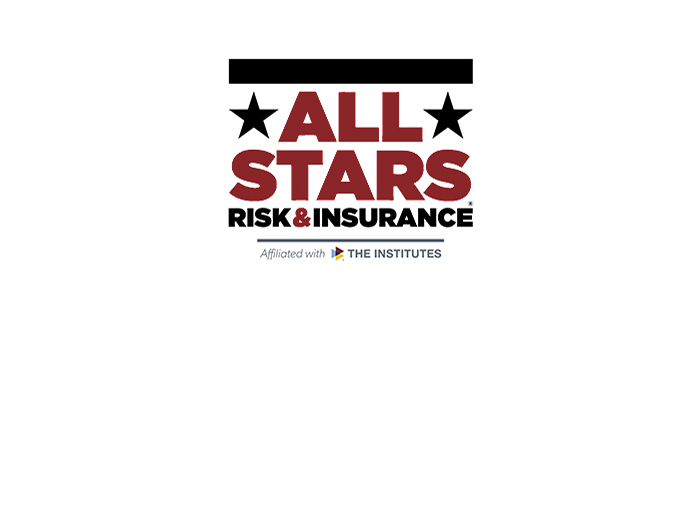FM Global Issues Resilience Index Amid Tumultuous Business Environment Worldwide

FM Global recently released its annual Resilience Index for 2021, and in a year of political upheaval and a global pandemic, the insurer has noted that business continuity is top of mind for many executives.
The Index includes 130 countries. This year, once again, showed Western Europe in the lead, with Denmark moving from third to first.
The United States did not fare as well, with Region 1 (the East Coast and Southeast) dropping from 10 to 17 overall; Region 2 (the West and Alaska) remaining constant from last year at 23; and Region 3 (Midwest/Central) at 9 out of the 130 countries.
Eric Jones, vice president and global manager, business risk consulting for FM Global, explained that the changes in rankings are meant to be informative but not decisive parts of a larger risk management and business continuity strategy.
“The best use of the Index is as a conversation starter,” he said.
“It’s a way to get companies to think about where they are exposed in the world, how much risk they are taking on in various parts of the world — because not all places around the globe are equal when it comes to risk. It helps companies think about the question, ‘How resilient are we if something bad happens somewhere?’ ”
Breaking Down the Index’s Findings
The Index is structured by three factors: economic, risk quality and supply chain.
Each of the factors contains four drivers for a total of 12 drivers that are analyzed individually.
The data used by the Index are sourced from the International Monetary Fund, the U.S. Energy Information Administration, the World Bank and the World Economic Forum, among other institutions, along with FM Global’s RiskMark® benchmarking algorithm for the risk quality factor.
With respect to risk quality, exposure to natural hazards, natural hazard risk quality, fire risk quality, and inherent cyber risk are the drivers.
The report noted, however, that at the driver level, as a rule of thumb, a change of fewer than six places from the prior year does not necessarily point to a specific cause for concern, because it is a relative measure of resilience across countries rather than an absolute measure. Ultimately, according to Jones, this adds up to resilience that favors first-tier economies.
“I think there is a strong correlation between strong and wealthier economies and resilience,” Jones said.
“Those economies tend to have businesses that have invested for quite a while in risk management and those risk management philosophies are fairly mature. In weaker economies or emerging economies, you don’t tend to see that as much. It’s a culture that takes a while to develop. You can think of it like a start-up versus a Fortune 500 company. A well-established company has the resources and the understanding that things can happen and they want to protect what’s been built and what’s been earned. With a start-up they’re just trying to survive.”
Addressing the Most Concerning Risks
Of particular concern across the risk quality resilience factor is the ongoing and increasing threat of natural disasters due to climate change.
“When it comes to climate change, it really makes the risk equation that much more relevant, particularly in parts of the world that are emerging and have less developed economies. That increases the risk not only to their businesses, but also because our economy is global and interconnected, it poses ripple effects and threats to businesses all over the world,” Jones explained.
“It’s a problem that the risk management culture isn’t necessarily keeping up with the increasing risk.”
Another area that has only recently begun to dominate risk management culture is cyber risk, which is constantly changing and can take many forms — from ransomware and state-sponsored attacks on vital industries, to consumer data losses.
In the Index, the “inherent cyber risk” driver is defined via the UN and Freedom House as “vulnerability to a cyber attack combined equally with the country’s ability to recover; captured by internet penetration (the percentage of individuals in a country who have access to the internet) and civil liberties.”
Jones believes that the Index’s calculus brings this definition into focus.
“The cyber component was introduced in 2017 and that’s because cyber has become such an enormous risk,” he said.
“You can look at the trends that are pretty clearly established over the last few years. Cyber events are not only increasing in frequency but also in severity. And it’s not just data that’s being held for ransom or data leakages. But you’ve got entire operational systems being seized up and operational processes that can’t occur. Businesses are not able to function in some of these attacks, and they are true business disruptive events, so including it in the Index makes absolute sense.”
COVID-19, which brought the world to a standstill and is still making its way through emerging nations, also weighed on the Index this year, with several key drivers shifting in its deadly wake.
Indeed, the report compares COVID to the threat of climate change, stating that, “like a pandemic, a changing climate also poses serious threats to supply chains, making it critical for executives to understand countries’ quality of [transport and utilities] infrastructure in the countries where their companies do business.”
“I think there’s a correlation with four of the drivers in our Index that correlate to pandemic recovery,” Jones said.
“That would be productivity or overall GDP, political risk, control of corruption, and corporate governance. I think there’s a correlation between those four drivers and where you see countries emerging more strongly from the pandemic. As opposed to the drivers being affected, it’s more of a correlation of some of the drivers within the Index that lend themselves to supporting overall business recovery.”
The 2022 Index will likely contain some additional information about how well the 130 measured countries did in business recovery.
The FM Global Resilience Index is published in partnership with Pentland Analytics. It is a publicly available resource that includes an interactive world map with resiliency rankings and scores based on the 12 drivers. The map is available here. &











